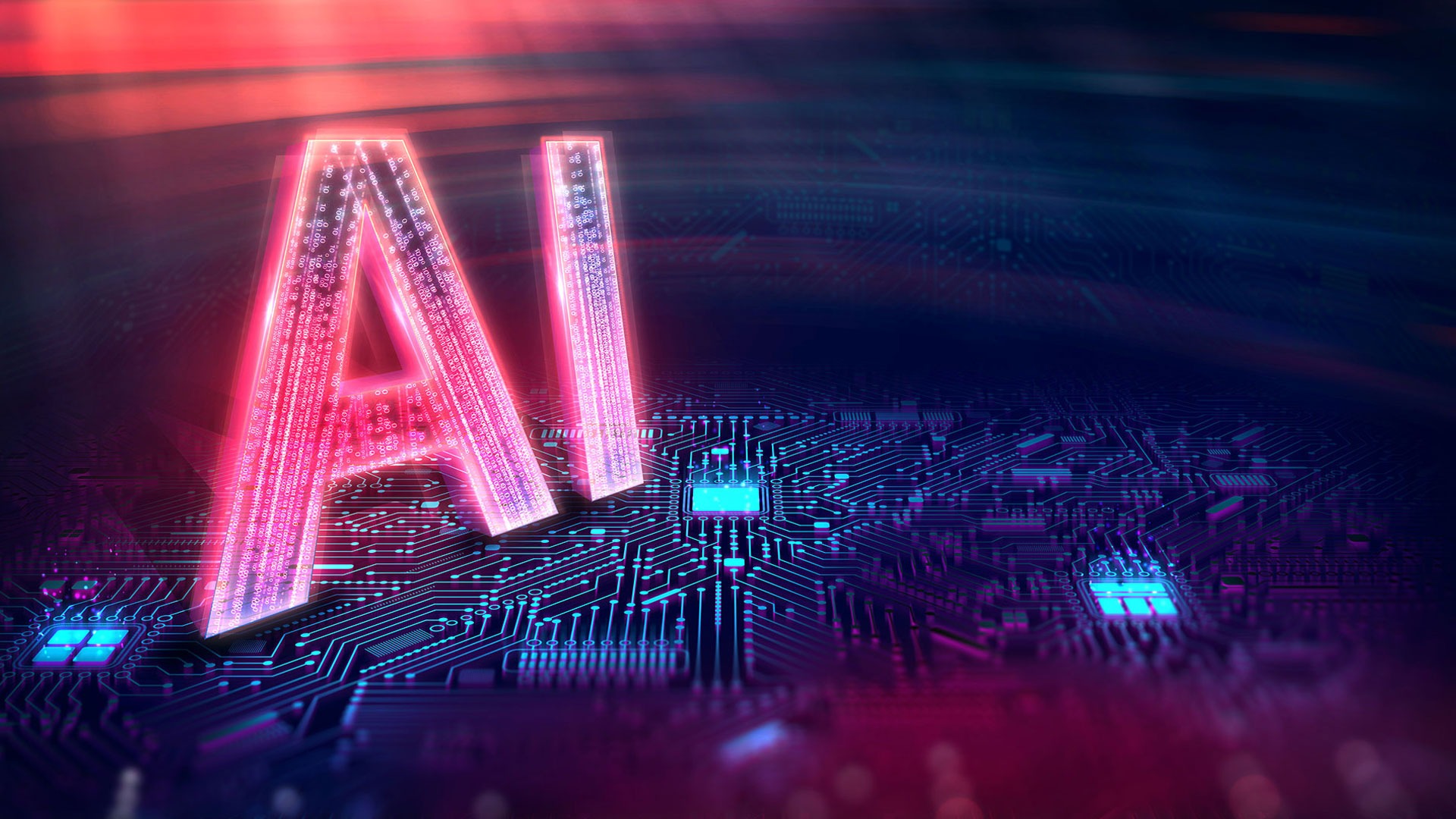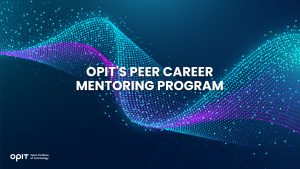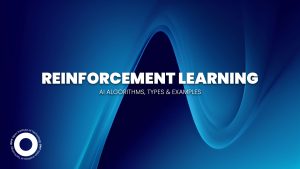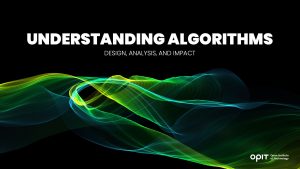

Artificial intelligence has impacted on businesses since its development in the 1940s. By automating various tasks, it increases security, streamlines inventory management, and provides many other tremendous benefits. Additionally, it’s expected to grow at a rate of nearly 40% until the end of the decade.
However, the influence of artificial intelligence goes both ways. There are certain disadvantages to consider to get a complete picture of this technology.
This article will cover the most important advantages and disadvantages of artificial intelligence.
Advantages of AI
Approximately 37% of all organizations embrace some form of AI to polish their operations. The numerous advantages help business owners take their enterprises to a whole new level.
Increased Efficiency and Productivity
One of the most significant advantages of artificial intelligence is elevated productivity and efficiency.
Automation of Repetitive Tasks
How many times have you thought to yourself: “I really wish there was a better way to take care of this mundane task.” There is – incorporate artificial intelligence into your toolbox.
You can program this technology to perform basically anything. Whether you need to go through piles of documents or adjust print settings, a machine can do the work for you. Just set the parameters, and you can sit back while AI does the rest.
Faster Data Processing and Analysis
You probably deal with huge amounts of information. Manual processing and analysis can be time-consuming, but not if you outsource the project to AI. Artificial intelligence can breeze through vast chunks of data much faster than people.
Improved Decision-Making
AI makes all the difference with decision-making through data-driven insights and the reduction of human error.

Data-Driven Insights
AI software gathers and analyzes data from relevant sources. Decision-makers can use this highly accurate information to make an informed decision and predict future trends.
Reduction of Human Error
Burnout can get the better of anyone and increase the chances of making a mistake. That’s not what happens with AI. If correctly programmed, it can carry out virtually any task, and the chances of error are slim to none.
Enhanced Customer Experience
Artificial intelligence can also boost customer experience.
Personalized Recommendations
AI machines can use data to recommend products and services. The technology reduces the need for manual input to further automate repetitive tasks. One of the most famous platforms with AI-based recommendations is Netflix.
Chatbots and Virtual Assistants
Many enterprises set up AI-powered chatbots and virtual assistants to communicate with customers and help them troubleshoot various issues. Likewise, these platforms can help clients find a certain page or blog on a website.
Innovation and Creativity
Contrary to popular belief, one of the biggest advantages of artificial intelligence is that it can promote innovation and creativity.
AI-Generated Content and Designs
AI can create some of the most mesmerizing designs imaginable. Capable of producing stunning content, whether in the written, video, or audio format, it also works at unprecedented speeds.

Problem-Solving Capabilities
Sophisticated AI tools can solve a myriad of problems, including math, coding, and architecture. Simply describe your problem and wait for the platform to apply its next-level skills.
Cost Savings
According to McKinsey & Company, you can decrease costs by 15%-20% in less than two years by implementing AI in your workplace. Two main factors underpin this reduction.
Reduced Labor Costs
Before AI became widespread, many tasks could only be performed by humans, such as contact management and inventory tracking. Nowadays, artificial intelligence can take on those responsibilities and cut labor costs.
Lower Operational Expenses
As your enterprise becomes more efficient through AI implementation, you reduce errors and lower operational expenses.

Disadvantages of AI
AI does have a few drawbacks. Understanding the disadvantages of artificial intelligence is key to making the right decision on the adoption of this technology.
Job Displacement and Unemployment
The most obvious disadvantage is redundancies. Many people lose their jobs because their position becomes obsolete. Organizations prioritize cost cutting, which is why they often lay off employees in favor of AI.
Automation Replacing Human Labor
This point is directly related to the previous one. Even though AI-based automation is beneficial from a time and money-saving perspective, it’s a major problem for employees. Those who perform repetitive tasks are at risk of losing their position.
Need for Workforce Reskilling
Like any other workplace technology, artificial intelligence requires people to learn additional skills. Since some abilities may become irrelevant due to AI-powered automation, job seekers need to pick up more practical skills that can’t be replaced by AI.
Ethical Concerns
In addition to increasing unemployment, artificial intelligence can also raise several ethical concerns.
Bias and Discrimination in AI Algorithms
AI algorithms are sophisticated, but they’re not perfect. The main reason being that developers inject their personal biases into the AI-based tool. Consequently, content and designs created through AI may contain subjective themes that might not resonate with some audiences.

Privacy and Surveillance Issues
One of the most serious disadvantages of artificial intelligence is that it can infringe on people’s privacy. Some platforms gather information about individuals without their consent. Even though it may achieve a greater purpose, many people aren’t willing to sacrifice their right to privacy.
High Initial Investment and Maintenance Costs
As cutting-edge technology, Artificial Intelligence is also pricey.
Expensive AI Systems and Infrastructure
The cost of developing a custom AI solution can be upwards of $200,000. Hence, it can be a financial burden.
Ongoing Updates and Improvements
Besides the initial investment, you also need to release regular updates and improvements to streamline the AI platform. All of which quickly adds up.
Dependence on Technology
While reliance on technology has its benefits, there are a few disadvantages.
Loss of Human Touch and Empathy
Although advanced, most AI tools fail to capture the magic of the human touch. They can’t empathize with the target audience, either, making the content less impactful.
Overreliance on AI Systems
If you become overly reliant on an AI solution, your problem-solving skills suffer and you might not know how to complete a project if the system fails.
Security Risks
AI tools aren’t impervious to security risks. Far from it – many risks arise when utilizing this technology.

Vulnerability to Cyberattacks
Hackers can tap into the AI network by adding training files the tool considers safe. Before you know it, the malware spreads and wreaks havoc on the infrastructure.
Misuse of AI Technology
Malicious users often have dishonorable intentions with AI software. They can use it to create deep fakes or execute phishing attacks to steal information.
AI in Various Industries: Pros and Cons
Let’s go through the pros and cons of using AI in different industries.

Healthcare
Advantages:
- Improved Diagnostics – AI can drastically speed up the diagnostics process.
- Personalized Treatment – Artificial intelligence can provide personalized treatment recommendations.
- Drug Development – AI algorithms can scan troves of information to help develop drugs.
Disadvantages:
- Privacy Concerns – Systems can collect patient and doctor data without their permission.
- High Costs – Implementing an AI system might be too expensive for many hospitals.
- Potential Misdiagnosis – An AI machine may overlook certain aspects during diagnosis.
Finance
Advantages:
- Fraud Detection – AI-powered data collection and analysis is perfect for preventing financial fraud.
- Risk Assessment – Automated reports and monitoring expedite and optimize risk assessment.
- Algorithmic Trading – A computer can capitalize on specific market conditions automatically to increase profits.
Disadvantages:
- Job Displacement – Risk assessment professionals and other specialists could become obsolete due to AI.
- Ethical Concerns – Artificial intelligence may use questionable data collection practices.
- Security Risks – A cybercriminal can compromise an AI system of a bank, allowing them to steal customer data.
Manufacturing
Advantages:
- Increased Efficiency – You can set product dimensions, weight, and other parameters automatically with AI.
- Reduced Waste – Artificial intelligence is more accurate than humans, reducing waste in manufacturing facilities.
- Improved Safety – Lower manual input leads to fewer workplace accidents.
Disadvantages:
- Job Displacement – AI implementation results in job loss in most fields. Manufacturing is no exception.
- High Initial Investment – Production companies typically need $200K+ to develop a tailor-made AI system.
- Dependence on Technology – AI manufacturing programs may require tweaks after some time, which is hard to do if you become overly reliant on the software.
Education
Advantages:
- Personalized Learning – An AI program can recommend appropriate textbooks, courses, and other resources.
- Adaptive Assessments – AI-operated systems adapt to the learner’s needs for greater retention.
- Virtual Tutors – Schools can reduce labor costs with virtual tutors.
Disadvantages:
- Privacy Concerns – Data may be at risk in an AI classroom.
- Digital Divide – Some nations don’t have the same access to technology as others, leading to so-called digital divide.
- Loss of Human Interaction – Teachers empathize and interact with their learners on a profound level, which can’t be said for AI.
AI Is Mighty But Warrants Caution

People rely on AI for higher efficiency, productivity, innovation, and automation. At the same time, it’s expensive, raises unemployment, and causes many privacy concerns.
That’s why you should be aware of the advantages and disadvantages of artificial intelligence. Striking a balance between the good and bad sides is vital for effective yet ethical implementation.
If you wish to learn more about AI and its uses across industries, consider taking a course by renowned tech experts.
Related posts

Source:
- Raconteur, published on November 06th, 2025
Many firms have conducted successful Artificial Intelligence (AI) pilot projects, but scaling them across departments and workflows remains a challenge. Inference costs, data silos, talent gaps and poor alignment with business strategy are just some of the issues that leave organisations trapped in pilot purgatory. This inability to scale successful experiments means AI’s potential for improving enterprise efficiency, decision-making and innovation isn’t fully realised. So what’s the solution?
Although it’s not a magic bullet, an AI operating model is really the foundation for scaling pilot projects up to enterprise-wide deployments. Essentially it’s a structured framework that defines how the organisation develops, deploys and governs AI. By bringing together infrastructure, data, people, and governance in a flexible and secure way, it ensures that AI delivers value at scale while remaining ethical and compliant.
“A successful AI proof-of-concept is like building a single race car that can go fast,” says Professor Yu Xiong, chair of business analytics at the UK-based Surrey Business School. “An efficient AI technology operations model, however, is the entire system – the processes, tools, and team structures – for continuously manufacturing, maintaining, and safely operating an entire fleet of cars.”
But while the importance of this framework is clear, how should enterprises establish and embed it?
“It begins with a clear strategy that defines objectives, desired outcomes, and measurable success criteria, such as model performance, bias detection, and regulatory compliance metrics,” says Professor Azadeh Haratiannezhadi, co-founder of generative AI company Taktify and professor of generative AI in cybersecurity at OPIT – the Open Institute of Technology.
Platforms, tools and MLOps pipelines that enable models to be deployed, monitored and scaled in a safe and efficient way are also essential in practical terms.
“Tools and infrastructure must also be selected with transparency, cost, and governance in mind,” says Efrain Ruh, continental chief technology officer for Europe at Digitate. “Crucially, organisations need to continuously monitor the evolving AI landscape and adapt their models to new capabilities and market offerings.”
An open approach
The most effective AI operating models are also founded on openness, interoperability and modularity. Open source platforms and tools provide greater control over data, deployment environments and costs, for example. These characteristics can help enterprises to avoid vendor lock-in, successfully align AI to business culture and values, and embed it safely into cross-department workflows.
“Modularity and platformisation…avoids building isolated ‘silos’ for each project,” explains professor Xiong. “Instead, it provides a shared, reusable ‘AI platform’ that integrates toolchains for data preparation, model training, deployment, monitoring, and retraining. This drastically improves efficiency and reduces the cost of redundant work.”
A strong data strategy is equally vital for ensuring high-quality performance and reducing bias. Ideally, the AI operating model should be cloud and LLM agnostic too.
“This allows organisations to coordinate and orchestrate AI agents from various sources, whether that’s internal or 3rd party,” says Babak Hodjat, global chief technology officer of AI at Cognizant. “The interoperability also means businesses can adopt an agile iterative process for AI projects that is guided by measuring efficiency, productivity, and quality gains, while guaranteeing trust and safety are built into all elements of design and implementation.”
A robust AI operating model should feature clear objectives for compliance, security and data privacy, as well as accountability structures. Richard Corbridge, chief information officer of Segro, advises organisations to: “Start small with well-scoped pilots that solve real pain points, then bake in repeatable patterns, data contracts, test harnesses, explainability checks and rollback plans, so learning can be scaled without multiplying risk. If you don’t codify how models are approved, deployed, monitored and retired, you won’t get past pilot purgatory.”
Of course, technology alone can’t drive successful AI adoption at scale: the right skills and culture are also essential for embedding AI across the enterprise.
“Multidisciplinary teams that combine technical expertise in AI, security, and governance with deep business knowledge create a foundation for sustainable adoption,” says Professor Haratiannezhadi. “Ongoing training ensures staff acquire advanced AI skills while understanding associated risks and responsibilities.”
Ultimately, an AI operating model is the playbook that enables an enterprise to use AI responsibly and effectively at scale. By drawing together governance, technological infrastructure, cultural change and open collaboration, it supports the shift from isolated experiments to the kind of sustainable AI capability that can drive competitive advantage.
In other words, it’s the foundation for turning ambition into reality, and finally escaping pilot purgatory for good.

The Open Institute of Technology (OPIT) is the perfect place for those looking to master the core skills and gain the fundamental knowledge they need to enter the exciting and dynamic environment of the tech industry. While OPIT’s various degrees and courses unlock the doors to numerous careers, students may not know exactly which line of work they wish to enter, or how, exactly, to take the next steps.
That’s why, as well as providing exceptional online education in fields like Responsible AI, Computer Science, and Digital Business, OPIT also offers an array of career-related services, like the Peer Career Mentoring Program. Designed to provide the expert advice and support students need, this program helps students and alumni gain inspiration and insight to map out their future careers.
Introducing the OPIT Peer Career Mentoring Program
As the name implies, OPIT’s Peer Career Mentoring Program is about connecting students and alumni with experienced peers to provide insights, guidance, and mentorship and support their next steps on both a personal and professional level.
It provides a highly supportive and empowering space in which current and former learners can receive career-related advice and guidance, harnessing the rich and varied experiences of the OPIT community to accelerate growth and development.
Meet the Mentors
Plenty of experienced, expert mentors have already signed up to play their part in the Peer Career Mentoring Program at OPIT. They include managers, analysts, researchers, and more, all ready and eager to share the benefits of their experience and their unique perspectives on the tech industry, careers in tech, and the educational experience at OPIT.
Examples include:
- Marco Lorenzi: Having graduated from the MSc in Applied Data Science and AI program at OPIT, Marco has since progressed to a role as a Prompt Engineer at RWS Group and is passionate about supporting younger learners as they take their first steps into the workforce or seek career evolution.
- Antonio Amendolagine: Antonio graduated from the OPIT MSc in Applied Data Science and AI and currently works as a Product Marketing and CRM Manager with MER MEC SpA, focusing on international B2B businesses. Like other mentors in the program, he enjoys helping students feel more confident about achieving their future aims.
- Asya Mantovani: Asya took the MSc in Responsible AI program at OPIT before taking the next steps in her career as a Software Engineer with Accenture, one of the largest IT companies in the world, and a trusted partner of the institute. With a firm belief in knowledge-sharing and mutual support, she’s eager to help students progress and succeed.
The Value of the Peer Mentoring Program
The OPIT Peer Career Mentoring Program is an invaluable source of support, inspiration, motivation, and guidance for the many students and graduates of OPIT who feel the need for a helping hand or guiding light to help them find the way or make the right decisions moving forward. It’s a program built around the sharing of wisdom, skills, and insights, designed to empower all who take part.
Every student is different. Some have very clear, fixed, and firm objectives in mind for their futures. Others may have a slightly more vague outline of where they want to go and what they want to do. Others live more in the moment, focusing purely on the here and now, but not thinking too far ahead. All of these different types of people may need guidance and support from time to time, and peer mentoring provides that.
This program is also just one of many ways in which OPIT bridges the gaps between learners around the world, creating a whole community of students and educators, linked together by their shared passions for technology and development. So, even though you may study remotely at OPIT, you never need to feel alone or isolated from your peers.
Additional Career Services Offered by OPIT
The Peer Career Mentoring Program is just one part of the larger array of career services that students enjoy at the Open Institute of Technology.
- Career Coaching and Support: Students can schedule one-to-one sessions with the institute’s experts to receive insightful feedback, flexibly customized to their exact needs and situation. They can request resume audits, hone their interview skills, and develop action plans for the future, all with the help of experienced, expert coaches.
- Resource Hub: Maybe you need help differentiating between various career paths, or seeing where your degree might take you. Or you need a bit of assistance in handling the challenges of the job-hunting process. Either way, the OPIT Resource Hub contains the in-depth guides you need to get ahead and gain practical skills to confidently move forward.
- Career Events: Regularly, OPIT hosts online career event sessions with industry experts and leaders as guest speakers about the topics that most interest today’s tech students and graduates. You can join workshops to sharpen your skills and become a better prospect in the job market, or just listen to the lessons and insights of the pros.
- Internship Opportunities: There are few better ways to begin your professional journey than an internship at a top-tier company. OPIT unlocks the doors to numerous internship roles with trusted institute partners, as well as additional professional and project opportunities where you can get hands-on work experience at a high level.
In addition to the above, OPIT also teams up with an array of leading organizations around the world, including some of the biggest names, including AWS, Accenture, and Hype. Through this network of trust, OPIT facilitates students’ steps into the world of work.
Start Your Study Journey Today
As well as the Peer Career Mentoring Program, OPIT provides numerous other exciting advantages for those who enroll, including progressive assessments, round-the-clock support, affordable rates, and a team of international professors from top universities with real-world experience in technology. In short, it’s the perfect place to push forward and get the knowledge you need to succeed.
So, if you’re eager to become a tech leader of tomorrow, learn more about OPIT today.
Have questions?
Visit our FAQ page or get in touch with us!
Write us at +39 335 576 0263
Get in touch at hello@opit.com
Talk to one of our Study Advisors
We are international
We can speak in:



